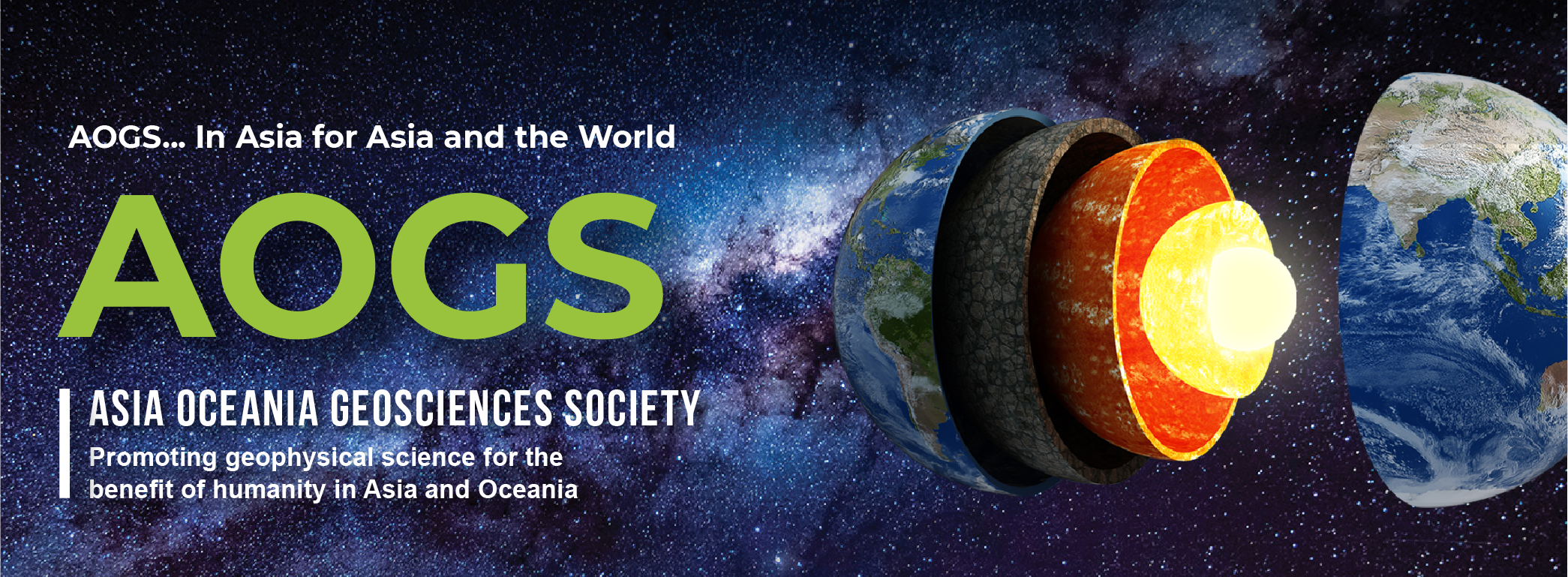
AOGS Kamide Lecture Award Recipient

2018-2019, Biogeosciences
Dr Masayuki KONDO
Biography
Masayuki Kondo is an assistant professor at the Center for Environmental Remote Sensing (CEReS), Chiba University, Japan since 2017. He has been a leading scientist of the carbon budget assessment study founded by the Ministry of Environment of Japan since 2014. With undergraduate and master degrees in High Energy Particle Physics at University of Texas at Dallas Kondo pursued a brief career in the Large Hadron Collider (LHC) experiment at Conseil Européen pour la Recherche Nucléaire (CERN) before pursuing a career as a Geoscientist. He earned a Ph.D. in Environmental Science from Hokkaido University, Japan. His research aims to assess reliable carbon budgets at regional and global scales using terrestrial ecosystem models, atmospheric inversions including GOSAT CO2/CH4 inversions, and empirical upscaling of CO2 fluxes from eddy flux observations, and to provide insight into future prospects of biogeochemical cycles of Earth. To date, Kondo has produced achievements including the identification of the significant sink-source change of Southeast Asian CO2 budget between decades and role of plant regrowth on recent enhancement of terrestrial CO2 uptake. Currently, his research focuses on filling a gap between carbon budgets from ‘top-down’ and ‘bottom-up’ approaches, particularly in tropical regions. Also he is leading a synthesis of global and regional carbon budget assessment from multiple approaches and processes, aiming to contribute the IPCC AR6 Chapter. Kondo takes special delight in discussing the subject of climate change and carbon cycle with scientific and general audiences including K-12 students.
Abstract
"The Role of CO2 Fluxes by Land Use Changes in Recent Terrestrial Carbon Balance"
CO2 flux by human-induced land use changes (LUC) is the integral component of current terrestrial carbon balance. With the magnitude accounting for approximately 20% of anthropogenic CO2 emissions, variability in LUC activities can shift the direction of the net CO2 flux either to the land or to the atmosphere. Common LUC practices such wood harvesting, deforestation, shifting cultivation, and grazing and crop harvesting induce CO2 emissions via decomposition of litter residues and consumption of cultivated products. While plants that were left or managed to re-grow after large scale LUC activates can contribute to CO2 uptake from the atmosphere. Until today, our understanding about the net LUC flux (an exchange of CO2 between the atmosphere and land resulted from LUC activities) has progressed owning to the development of several independent estimation techniques such an aggregation of national statistics of ecosystem inventory measurements (statistical approach), carbon stock and land cover monitoring based on satellite observations (remote-sensing approach), and estimation of individual components of the net LUC flux based on theoretical and empirical relations (modelling approach). Using these approaches, this lecture presents the two case studies demonstrating the impact of (1) LUC emissions and (2) CO2 uptake by plant regrowth in recent terrestrial carbon balance.
(1) Recent pattern of LUC emissions and its role in variability of the net CO2 flux in Southeast Asia. LUC activity and climate variability induce large variations in the net CO2 flux in the pantropics, shifting the direction of flux either to the land or to the atmosphere. In Southeast Asia, LUC emissions account for a major fraction globally and climatic conditions are directly influenced by El Niño Southern Oscillation (ENSO). However, the variability of the net CO2 flux in Southeast Asia is not fully understood, and there has been no detailed studies addressing effects of the LUC and climate on flux variability. Using modeling and remote-sensing approaches, this study illustrates the decadal variability of the net CO2 flux in Southeast Asia over the past 30 years, with an aim to identify underlying factors controlling the decadal variability of the net CO2 flux.
(2) Plant regrowth as a driver of recent enhancement of terrestrial CO2 uptake. Attributing drivers of net CO2 uptake in detail leads to clarification of causes for the recent enhancement of CO2 uptake by the terrestrial biosphere. The increasing strength of the land uptake in the 2000s has been attributed so far to a stimulating effect of rising atmospheric CO2 on photosynthesis (CO2 fertilization). However, it is still arguable whether the CO2 fertilization is a dominant cause for the recent enhancement of CO2 uptake because, in addition to the level of atmospheric CO2, the terrestrial biosphere has undergone historical changes through land use and management. Here using multiple approaches for CO2 flux estimation, this study shows a decadal-scale CO2 uptake enhancement is induced not only by CO2 fertilization, but also an increasing uptake by plant regrowth from past land use changes (LUC), with its effect most pronounced in eastern North America, southern and eastern Europe, and southeastern temperate Eurasia.
